Platform Sandbox v.2
Software.
A pedagogical design tool.
Create architectural assemblages by sampling and mixing digital readymades.
Used in teaching at Staedelschule Architecture Class, 2016-17
Screenshots by the students of the first year at SAC.
Made in Unity.
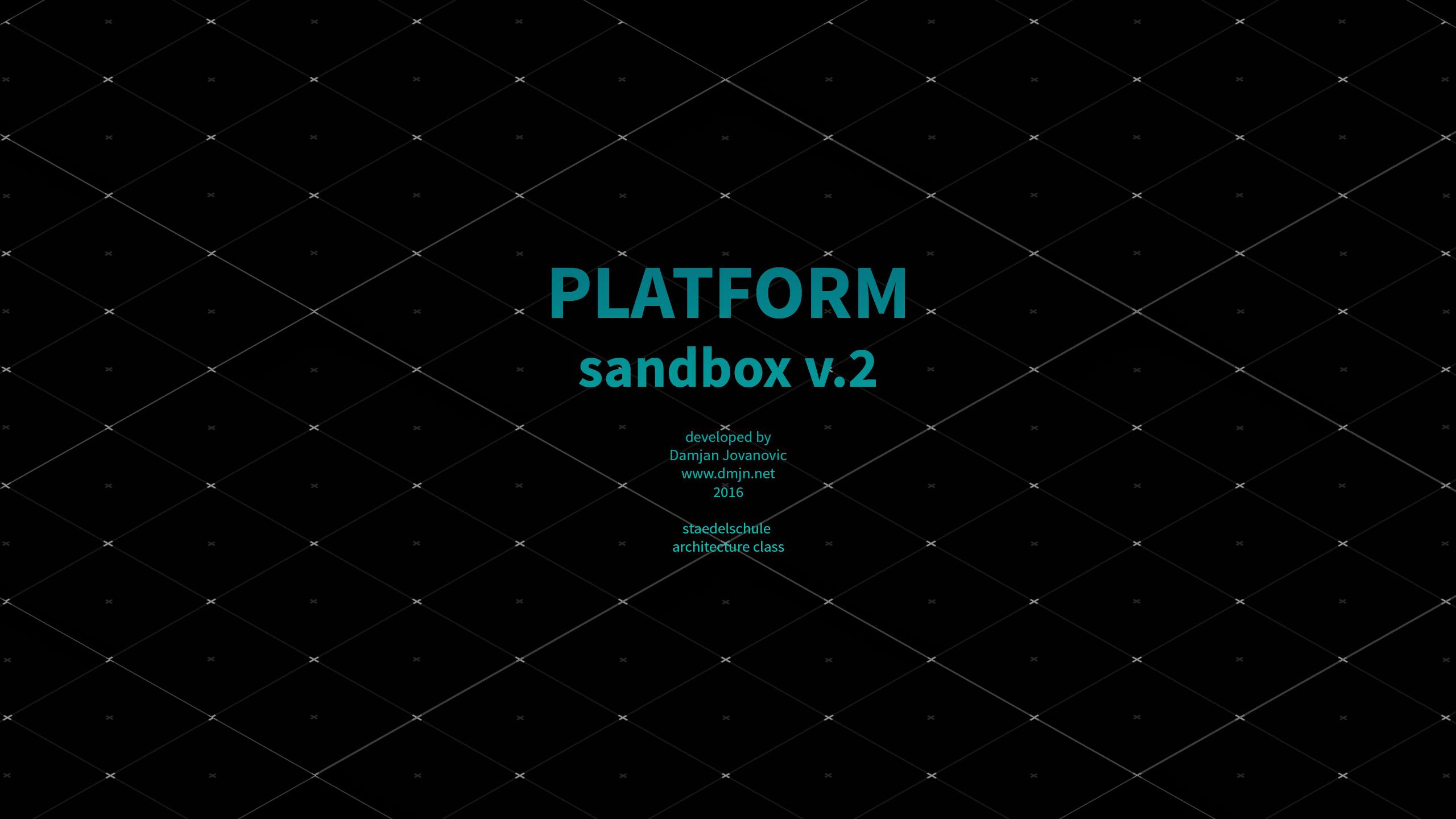
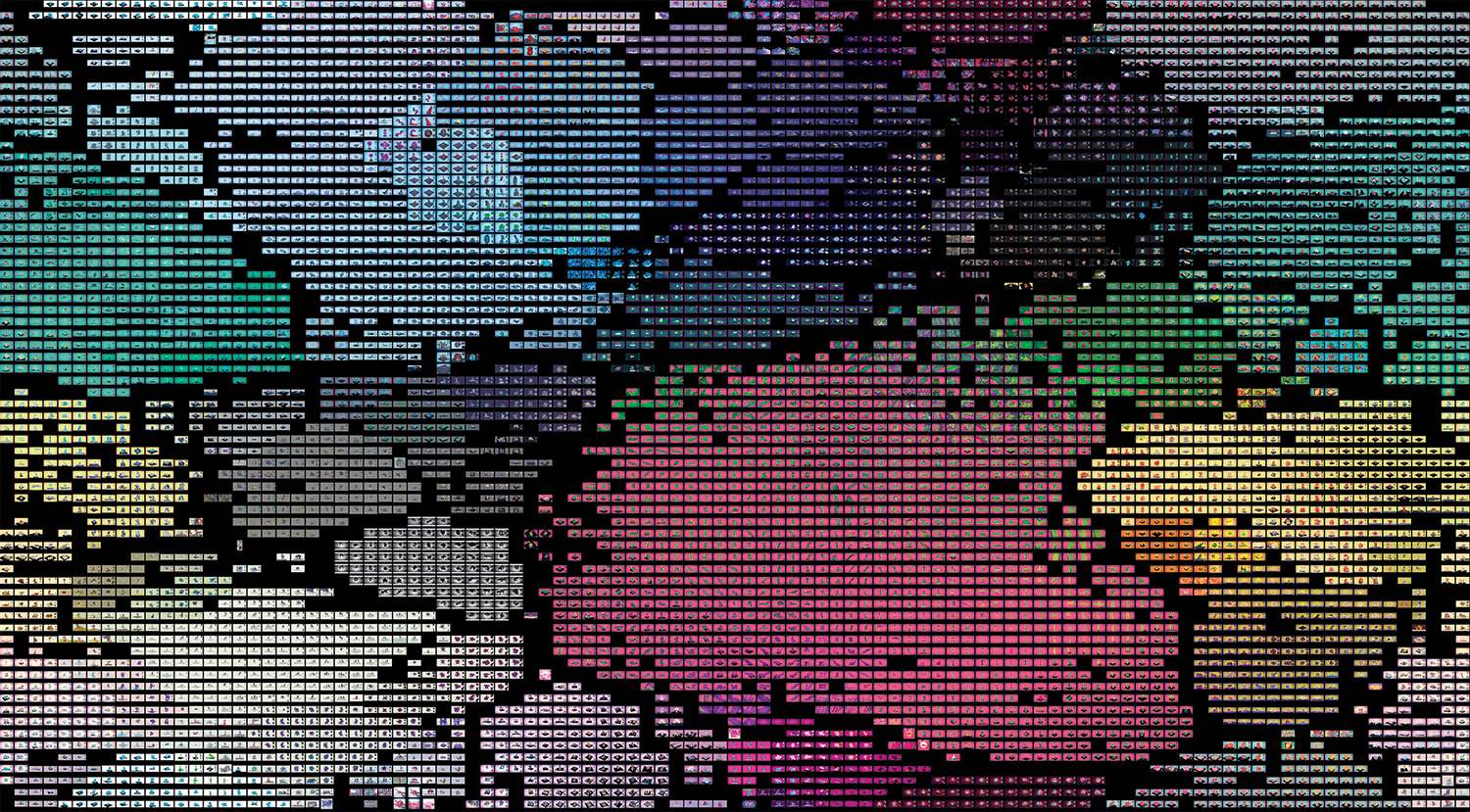
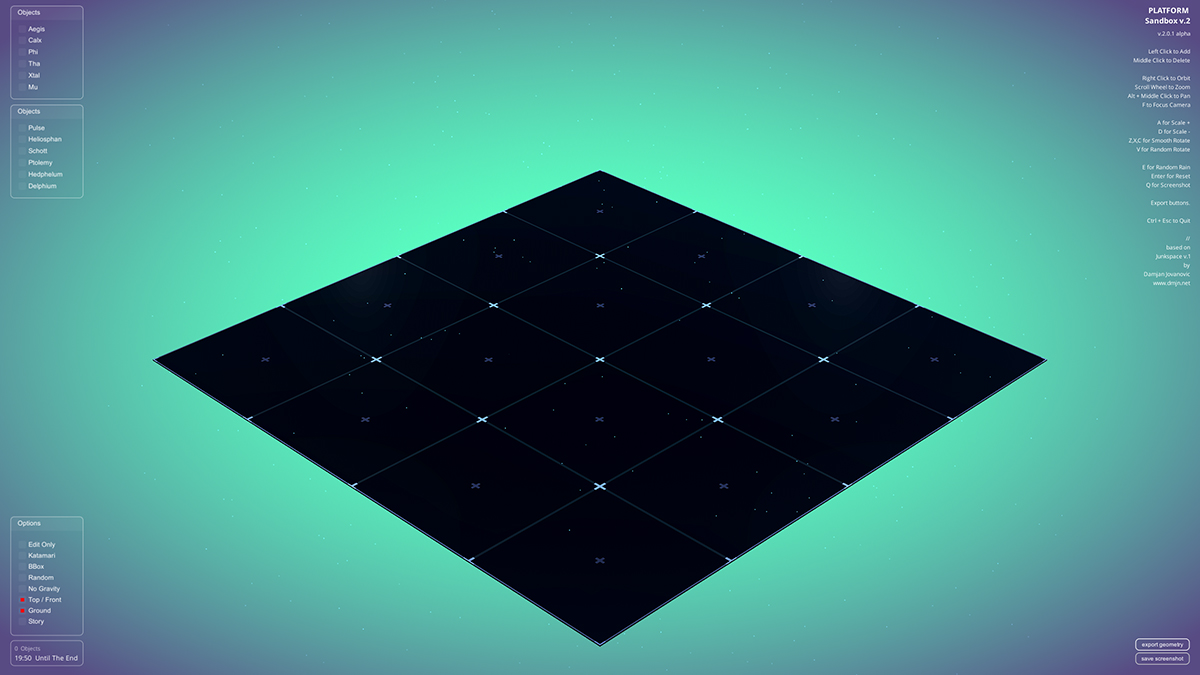
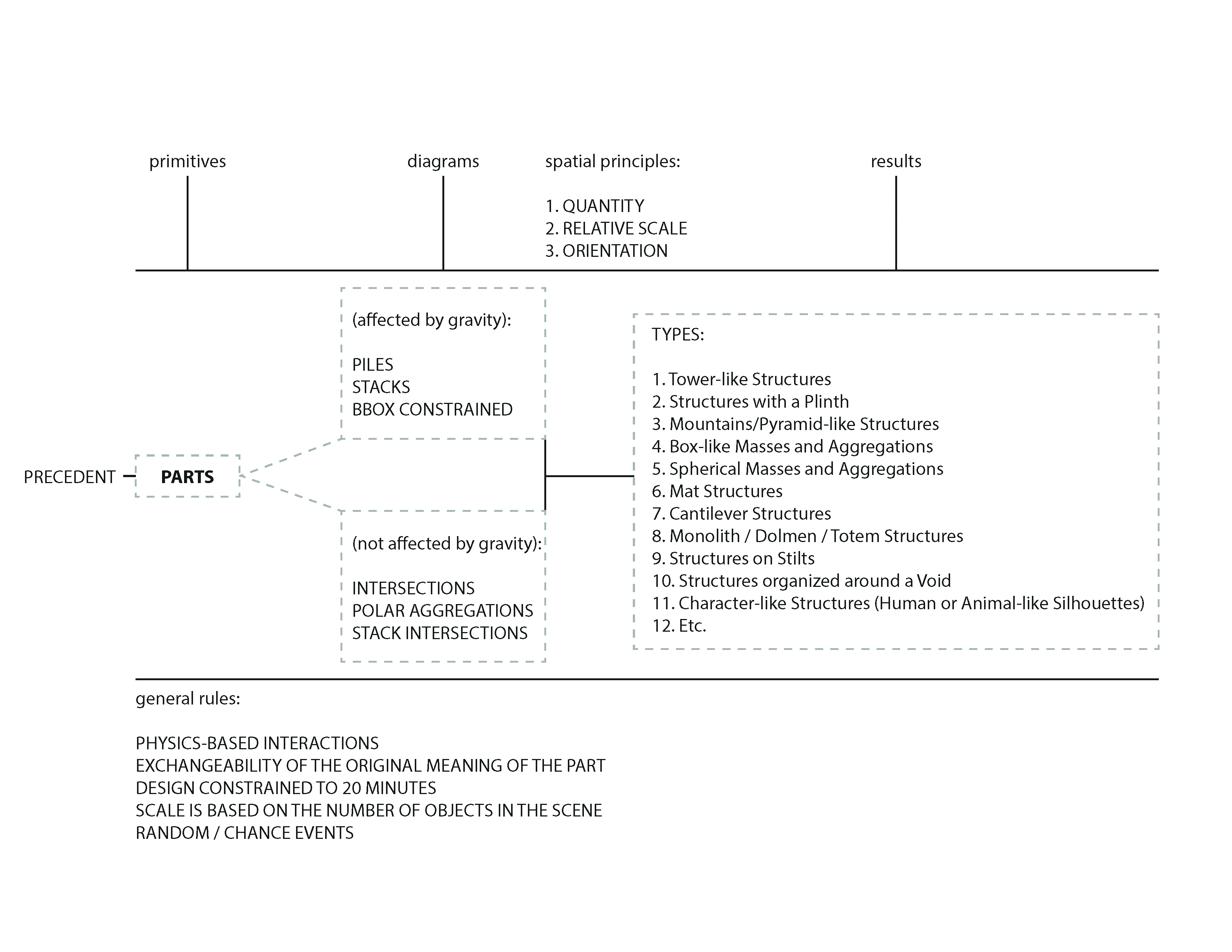



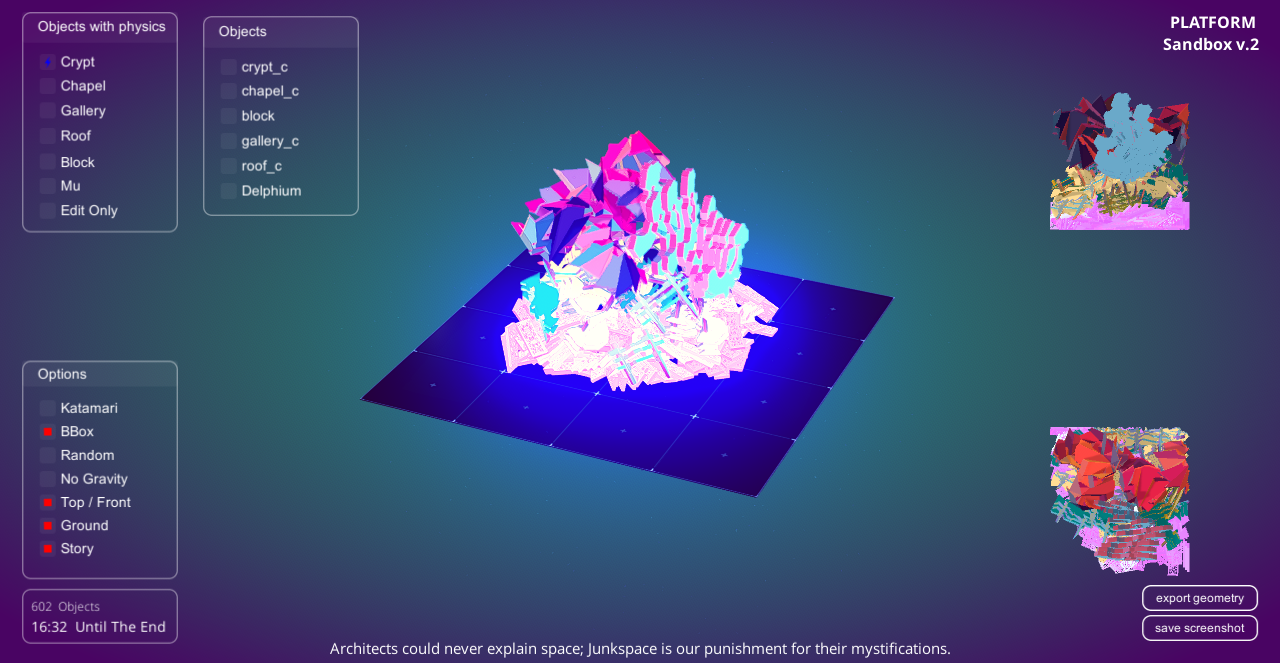

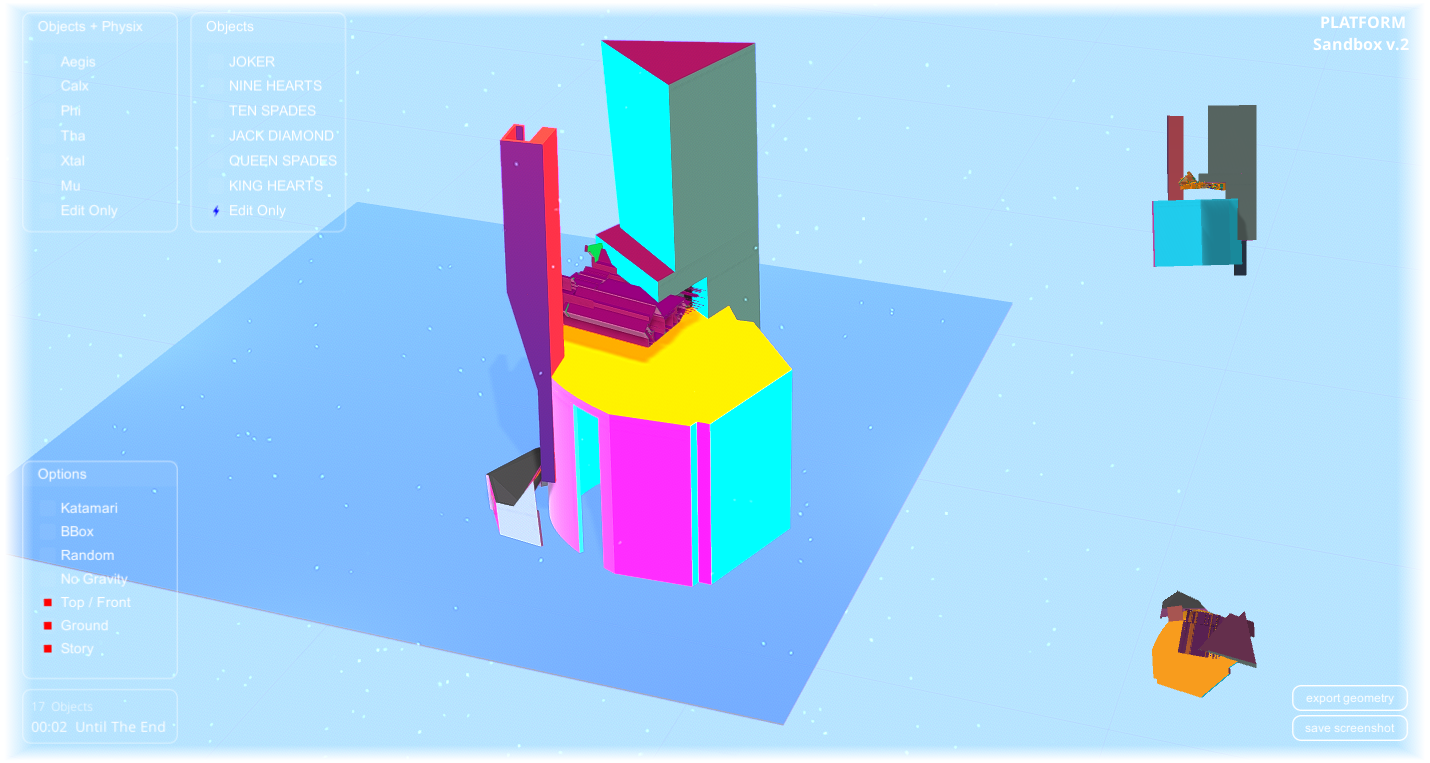
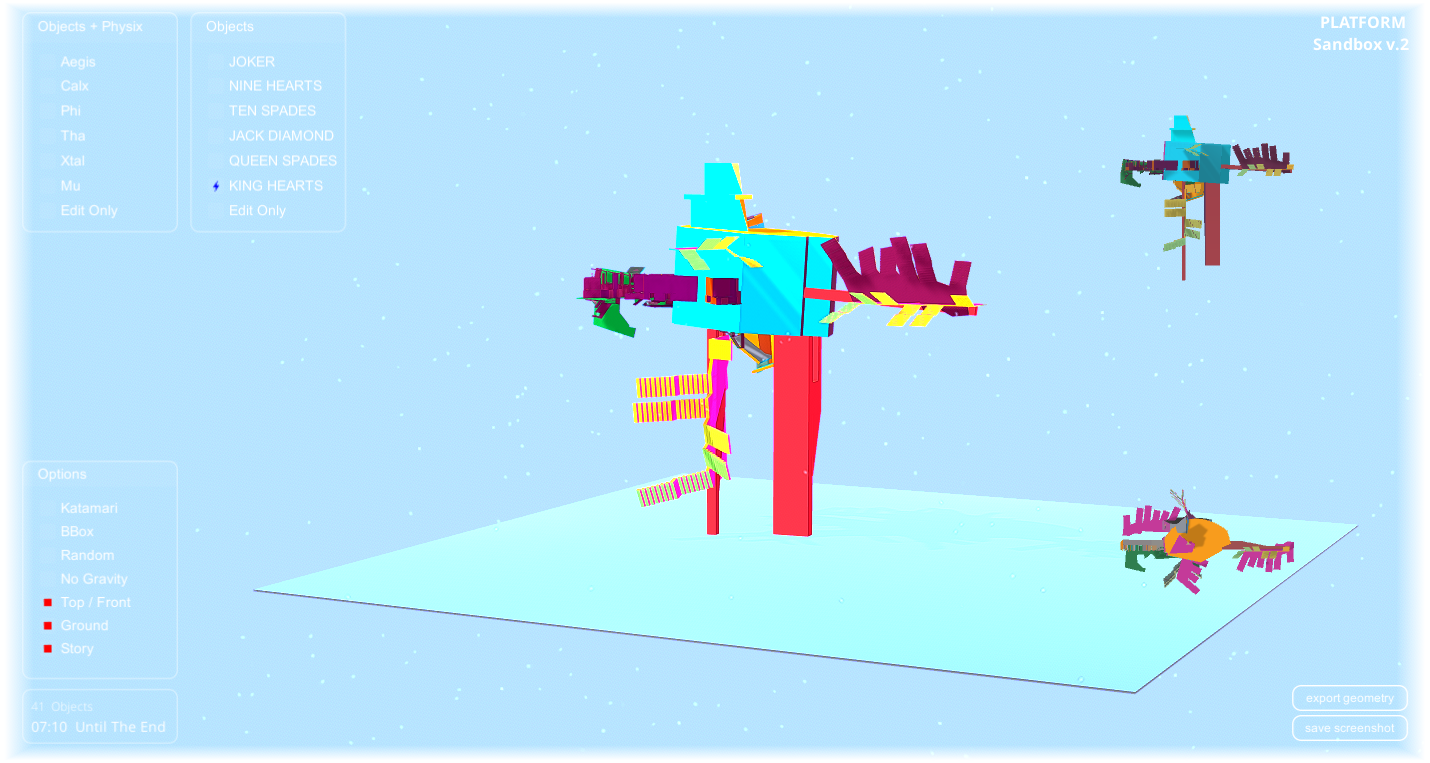
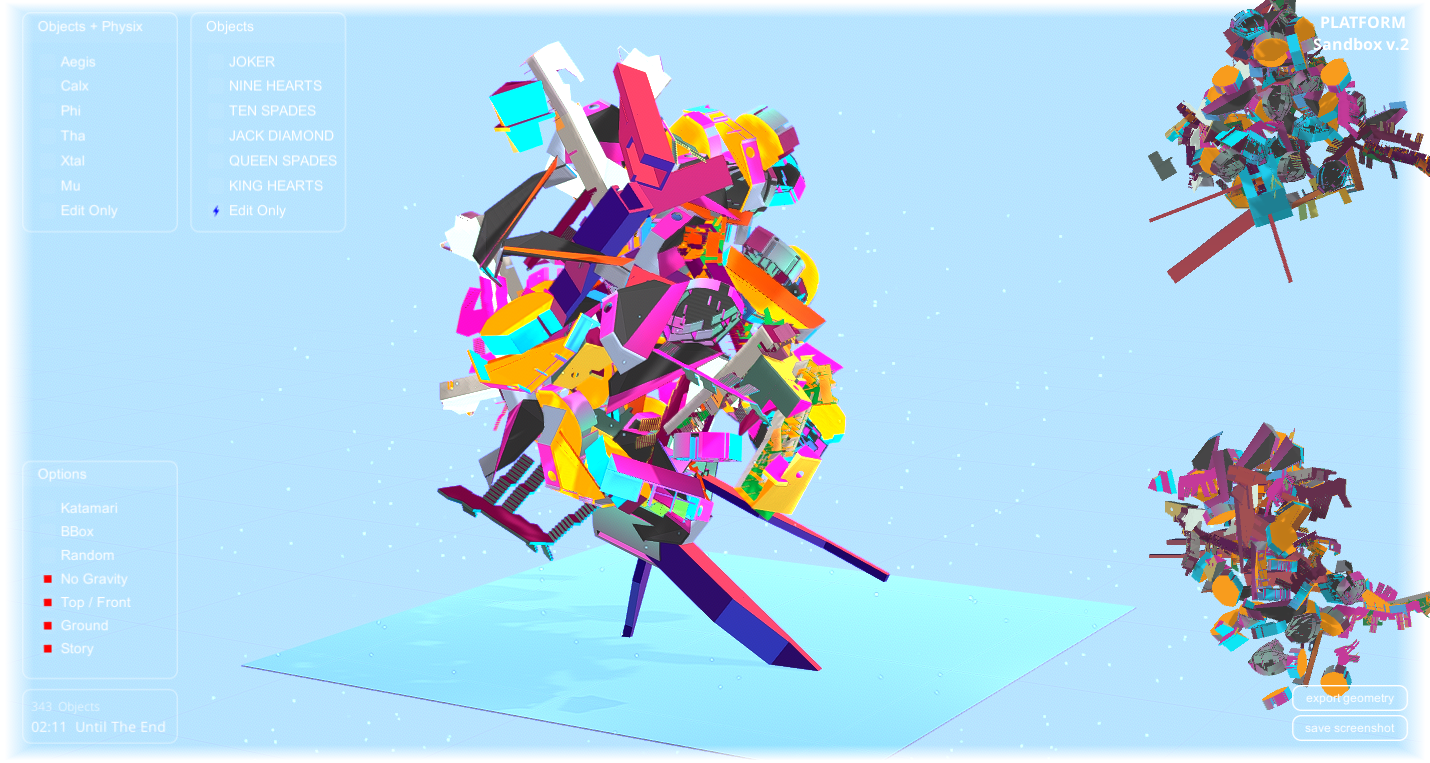
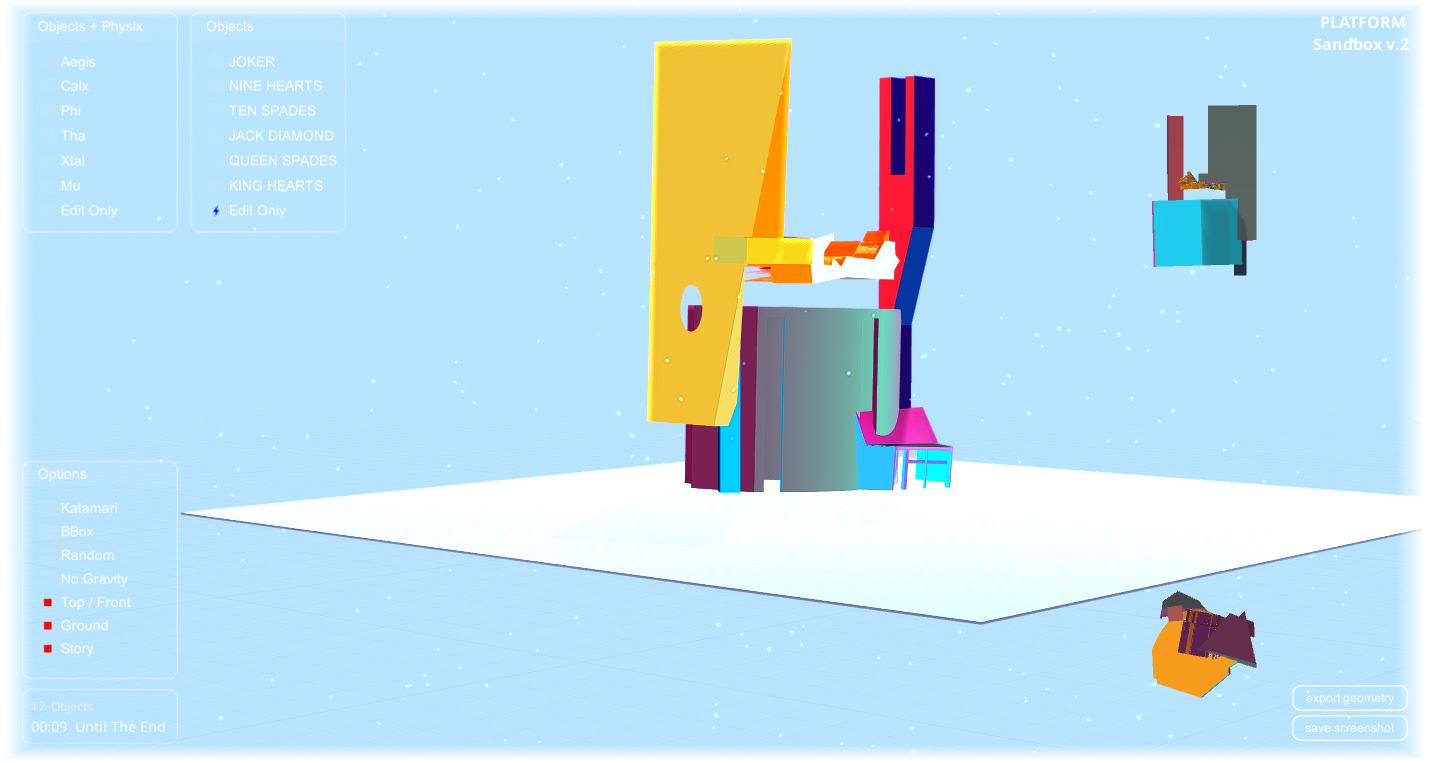
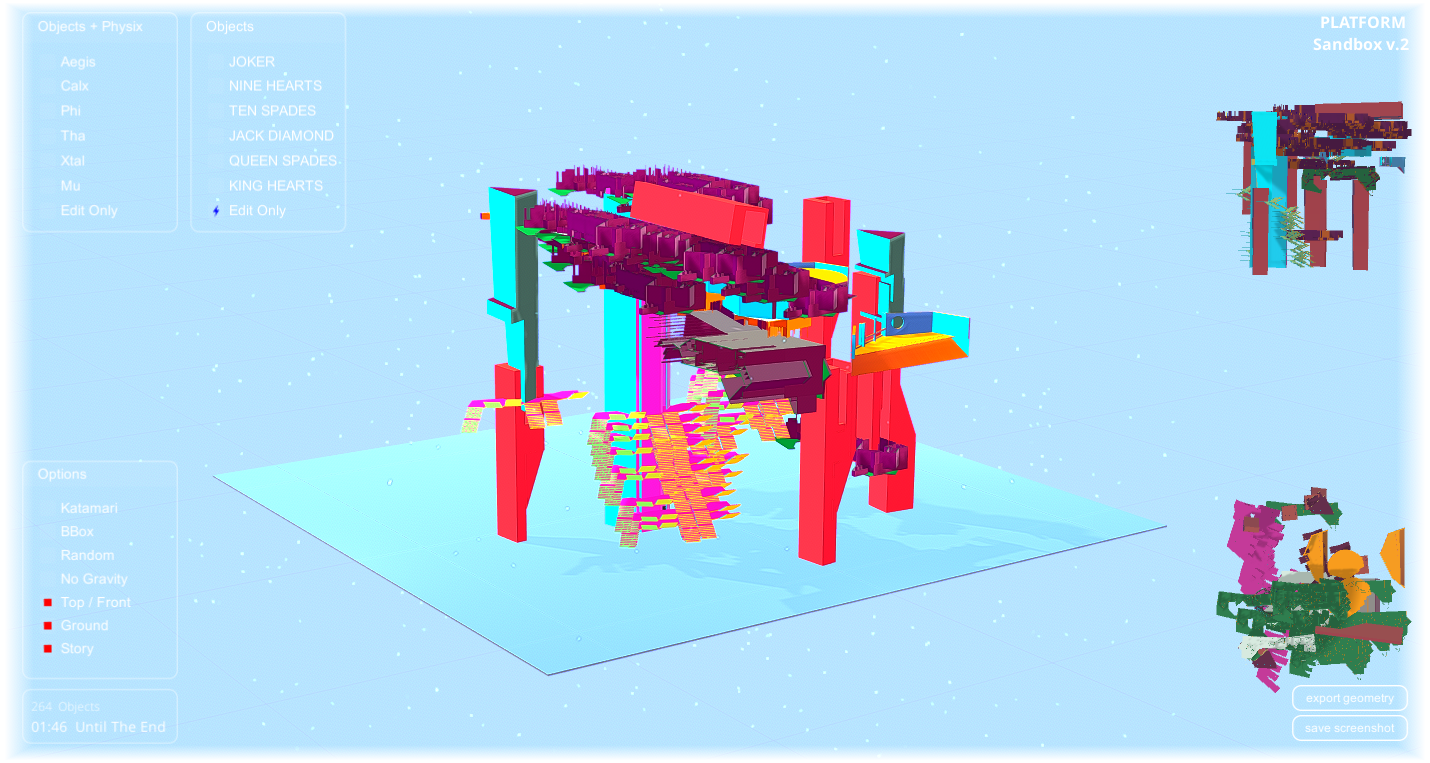

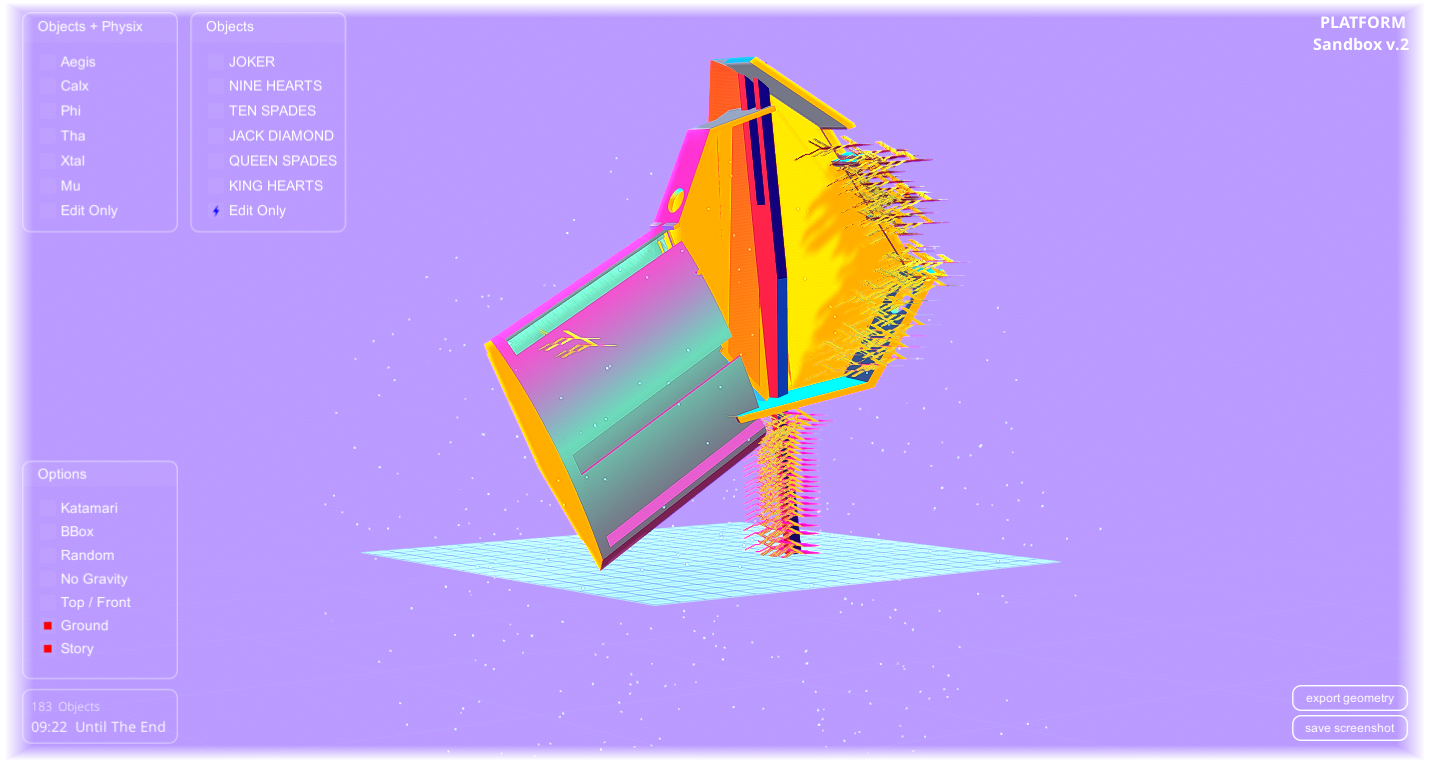
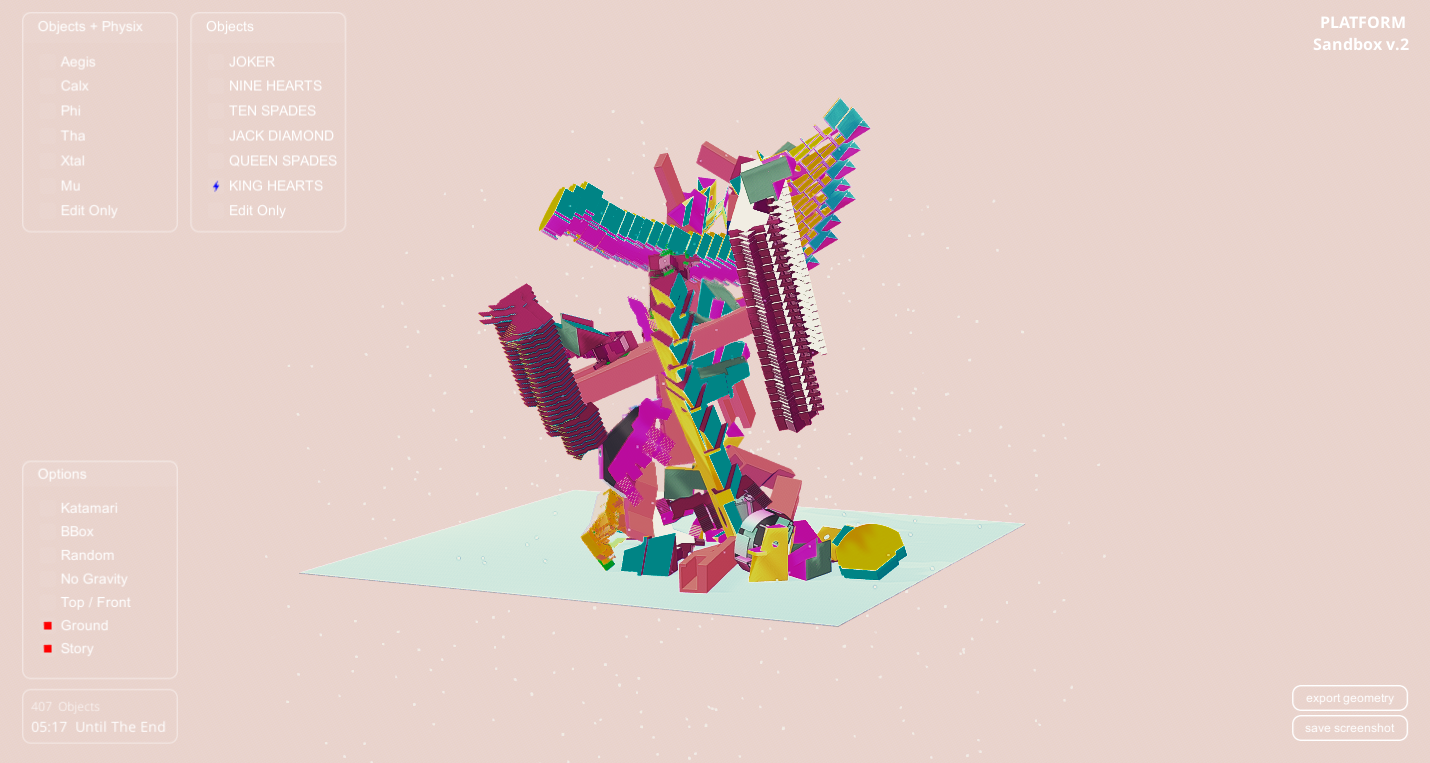
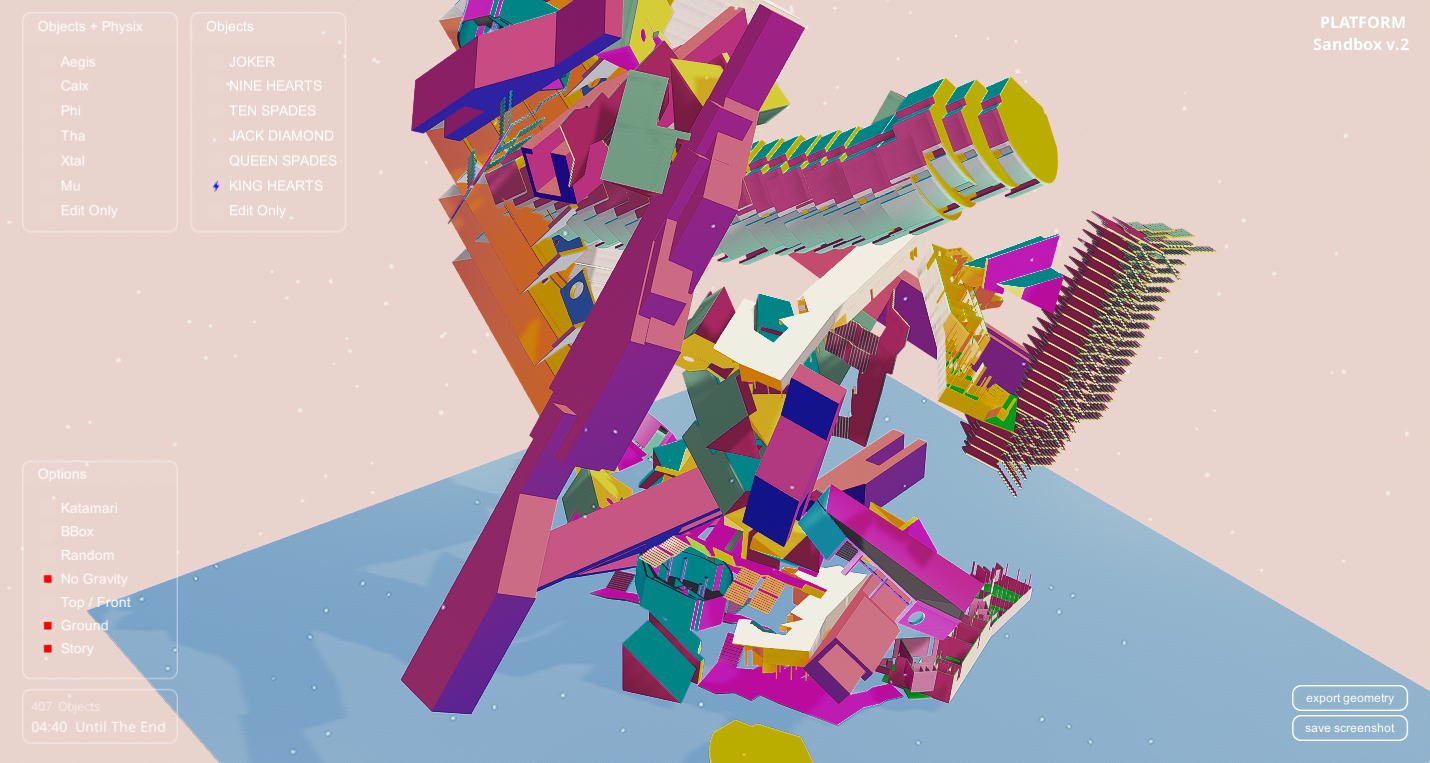
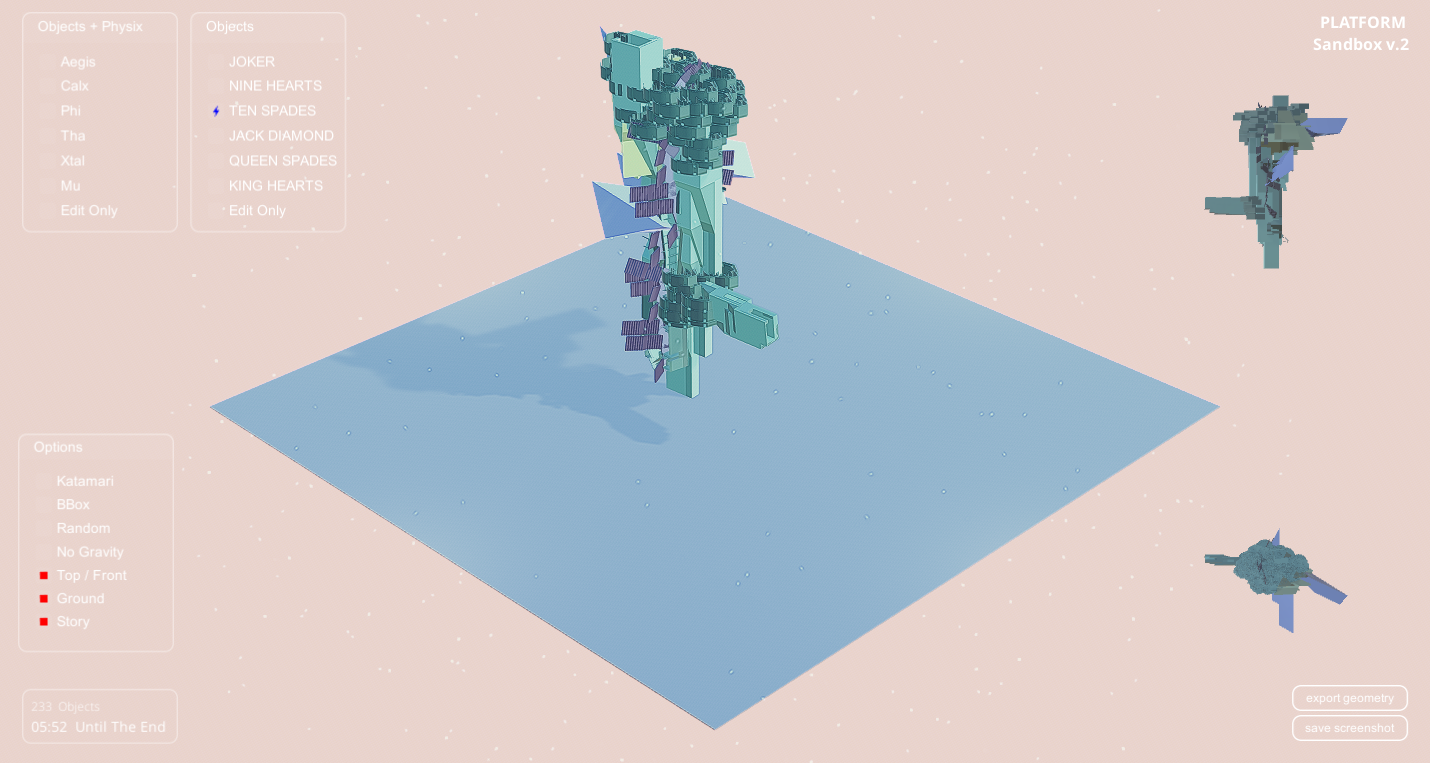
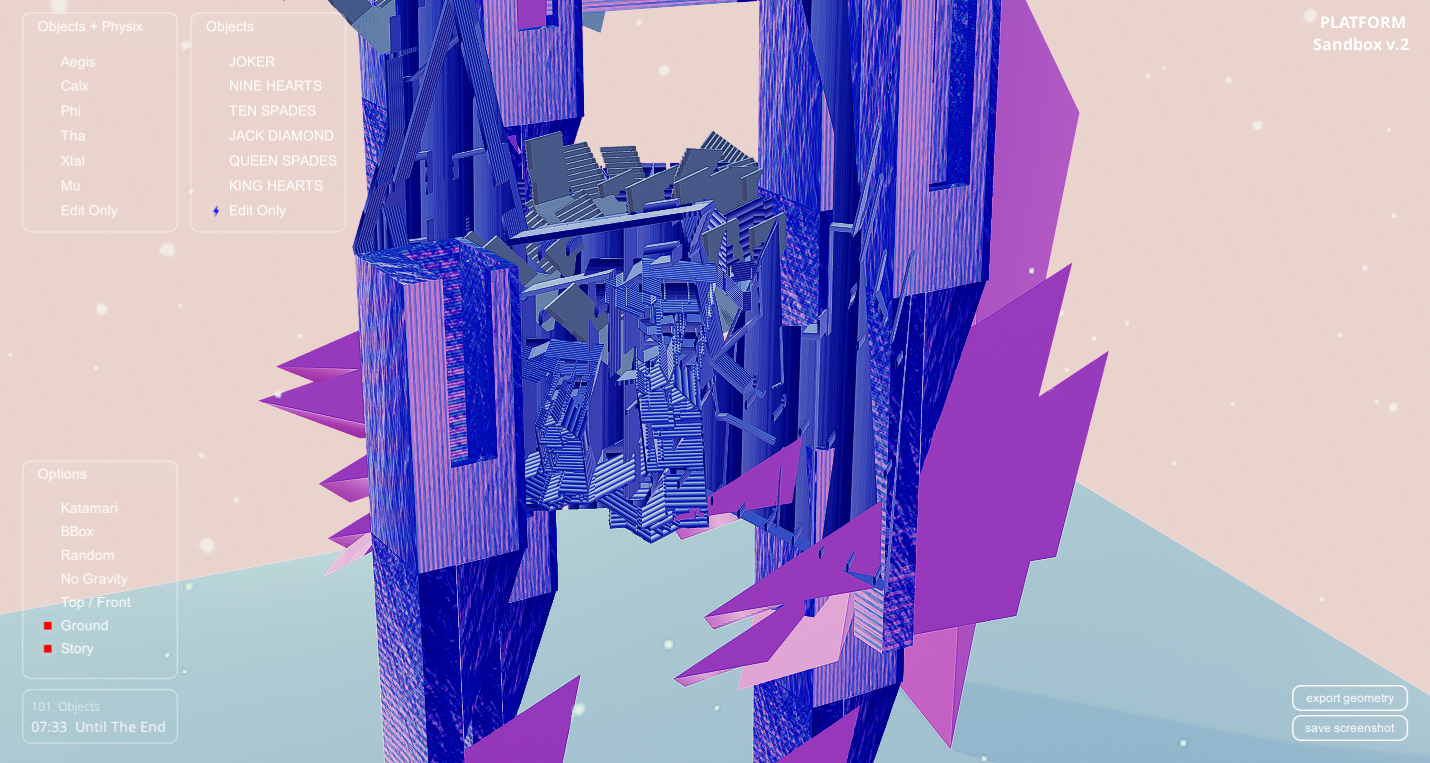

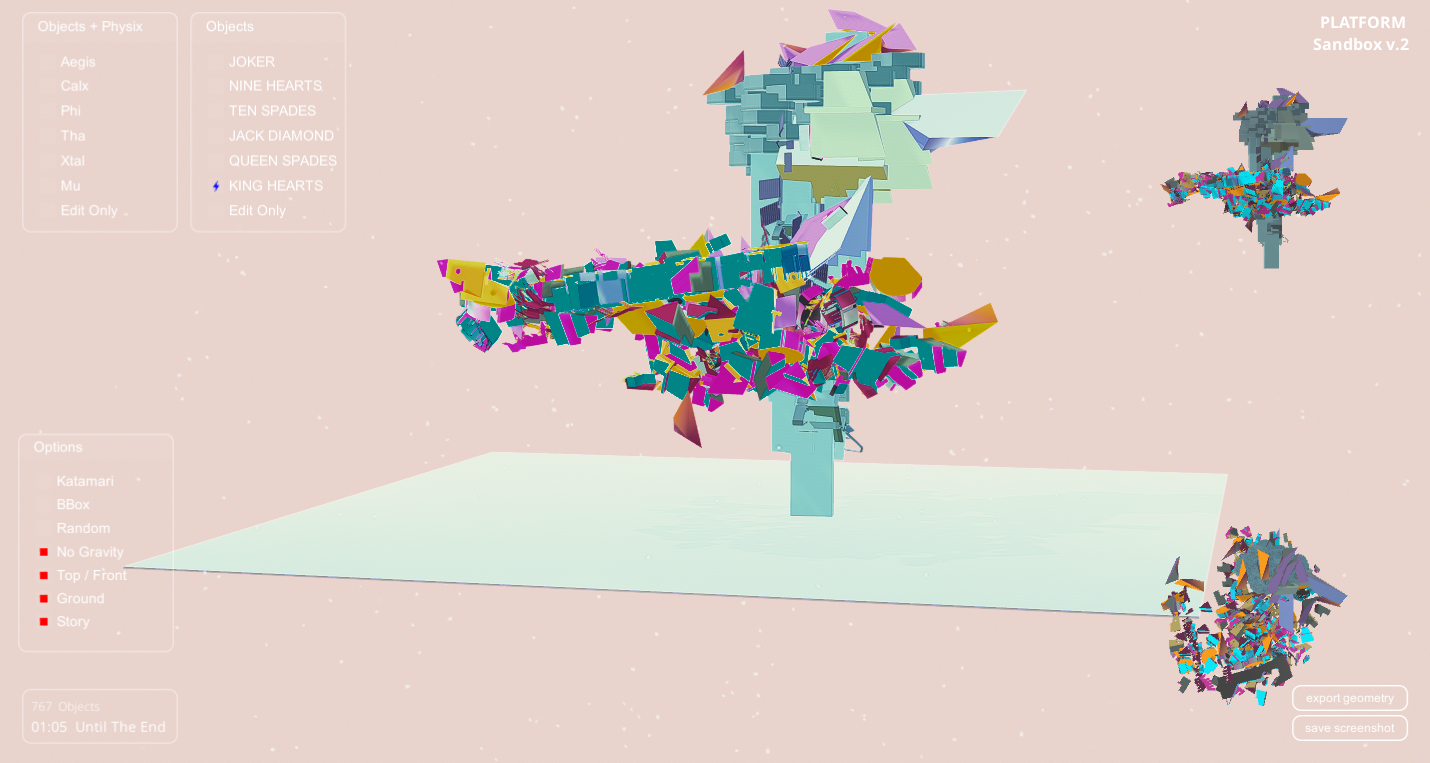

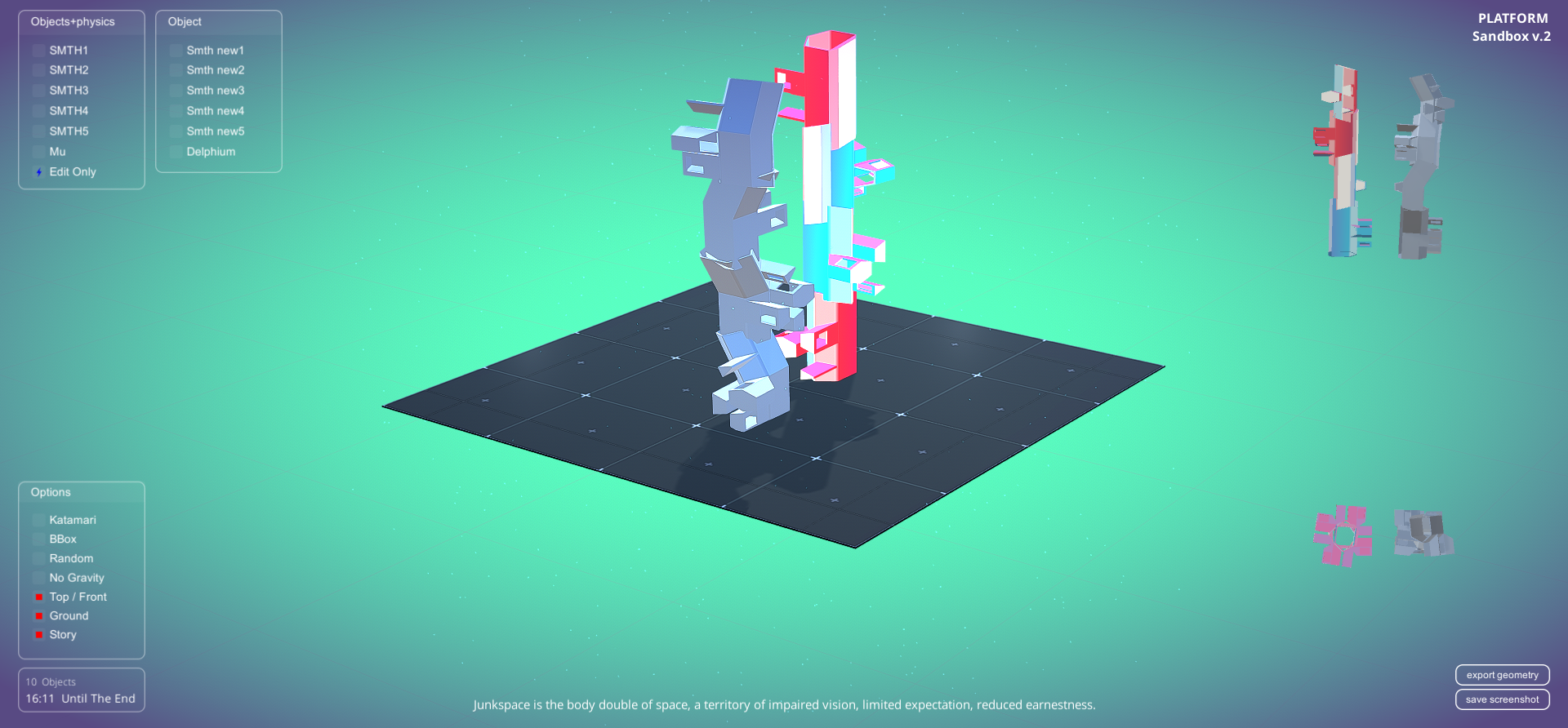
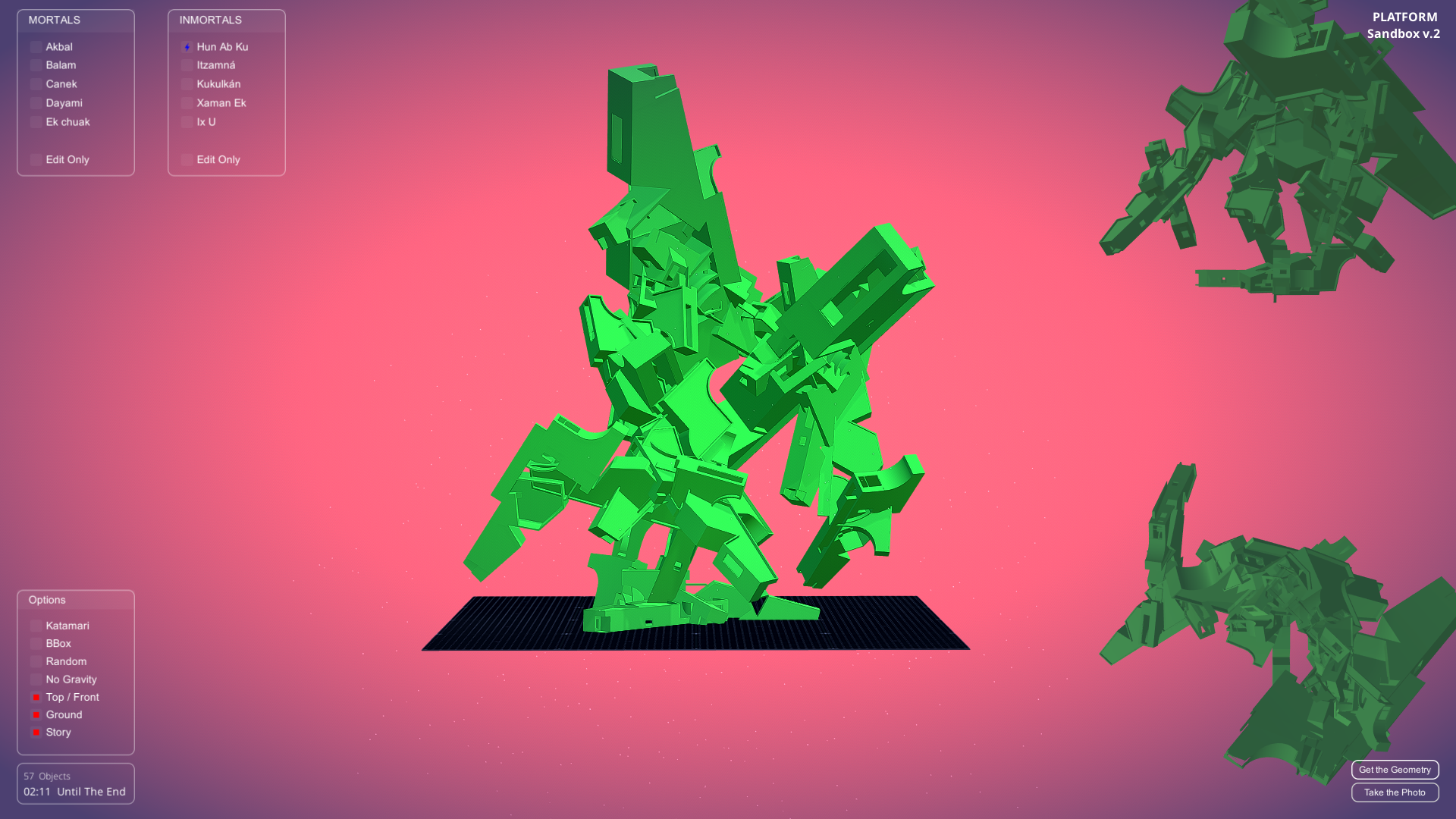
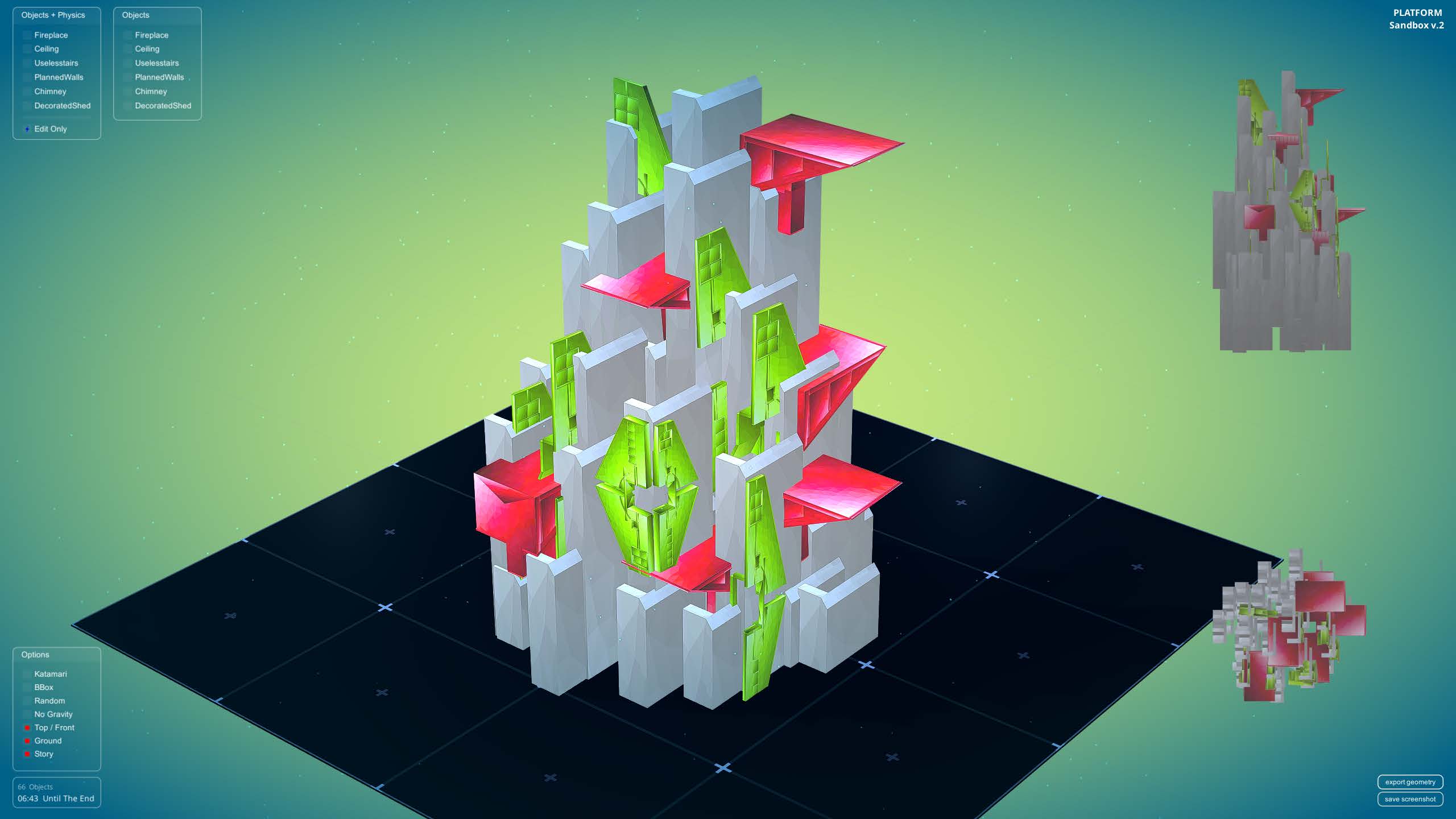

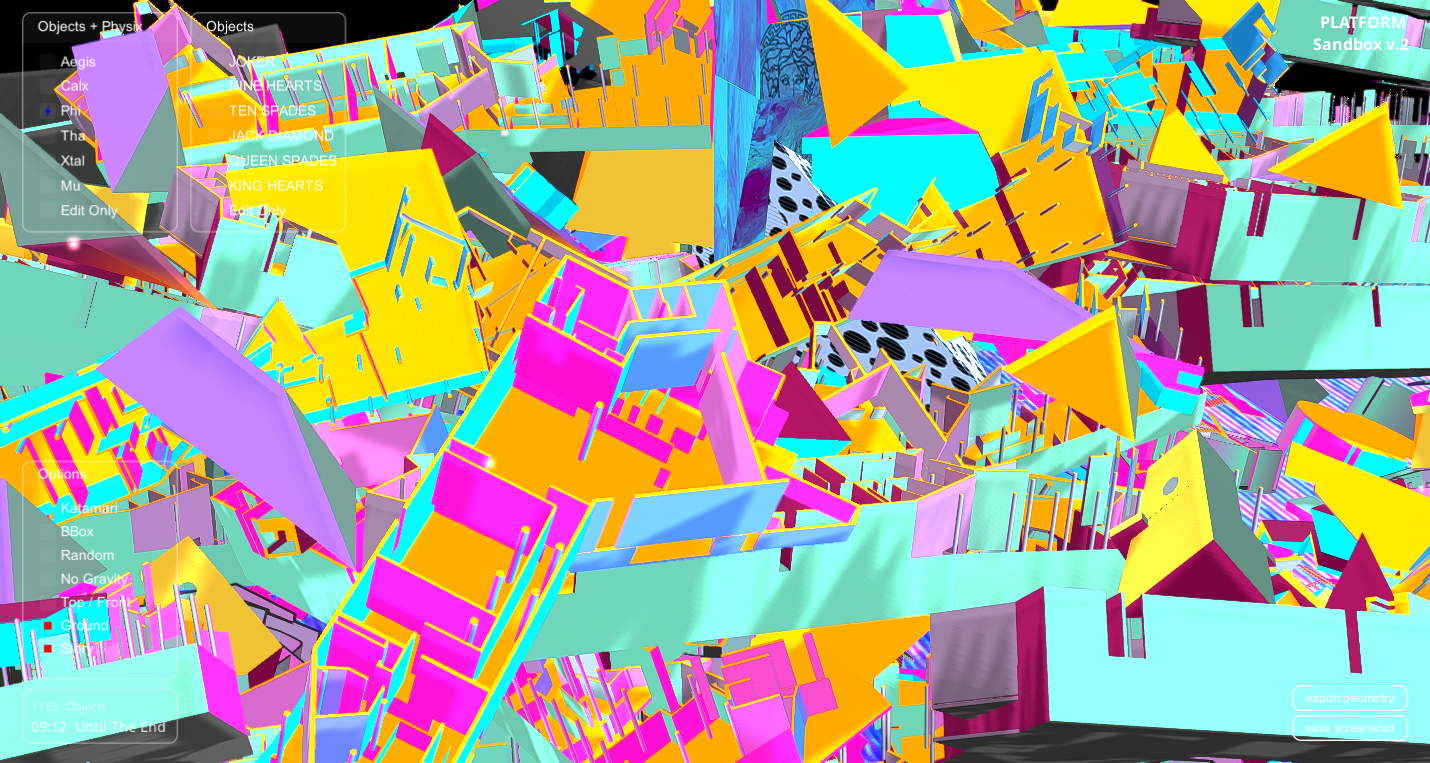

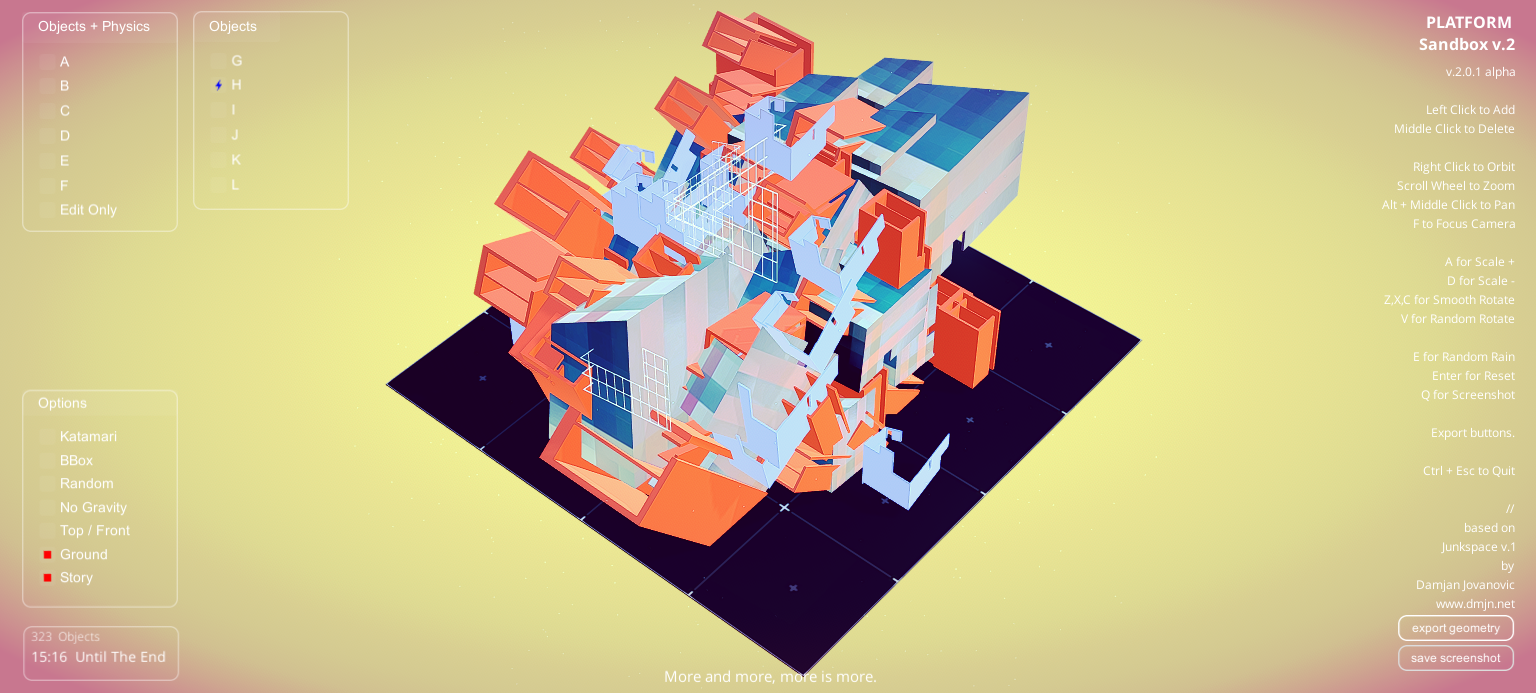
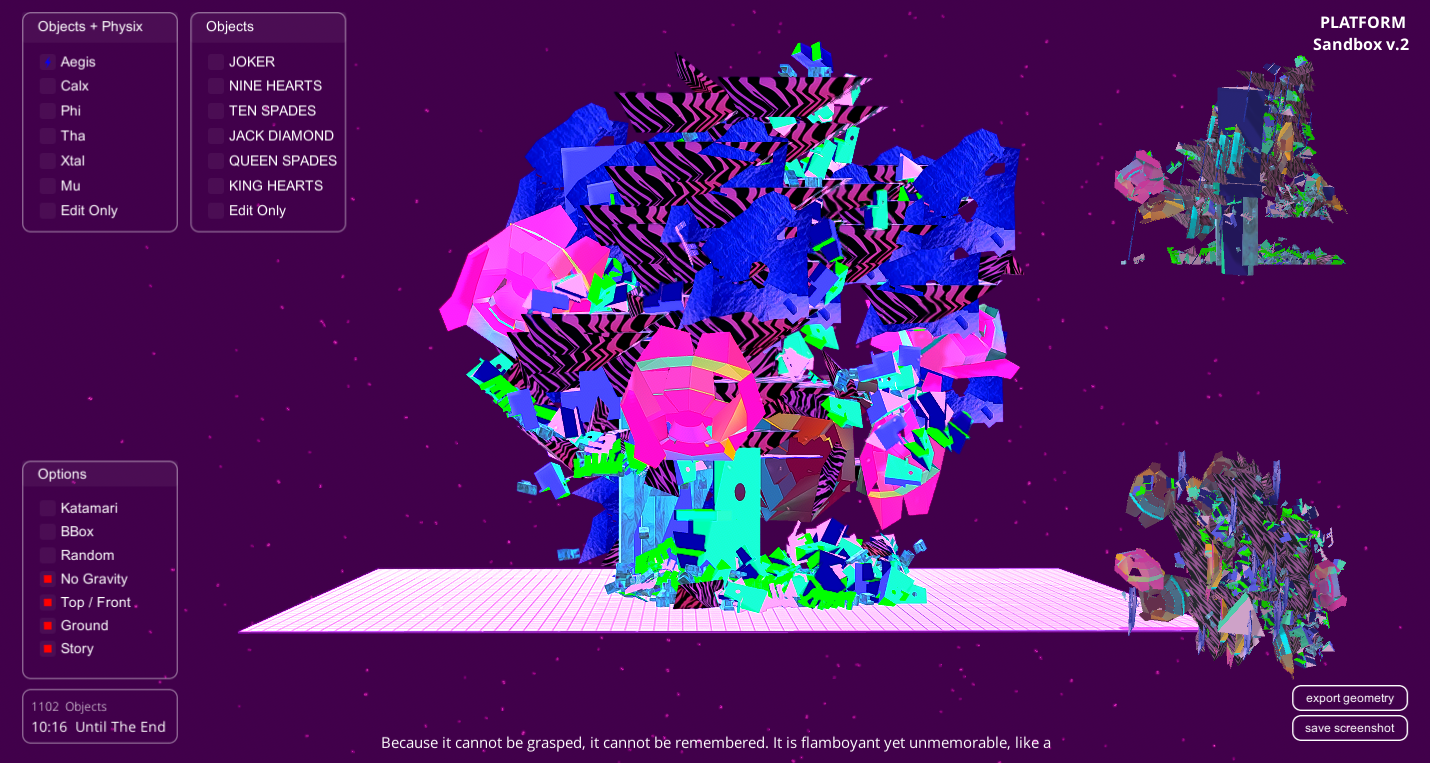


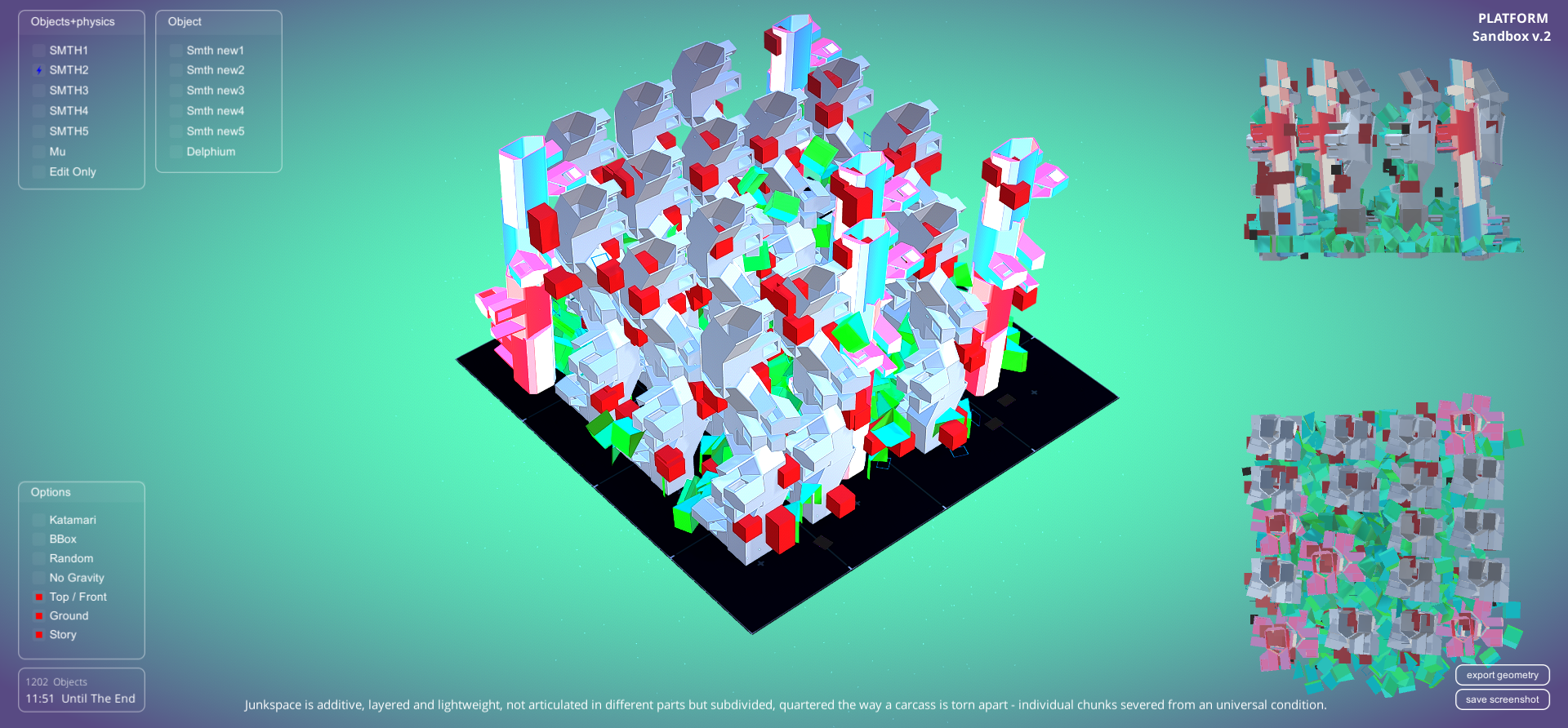

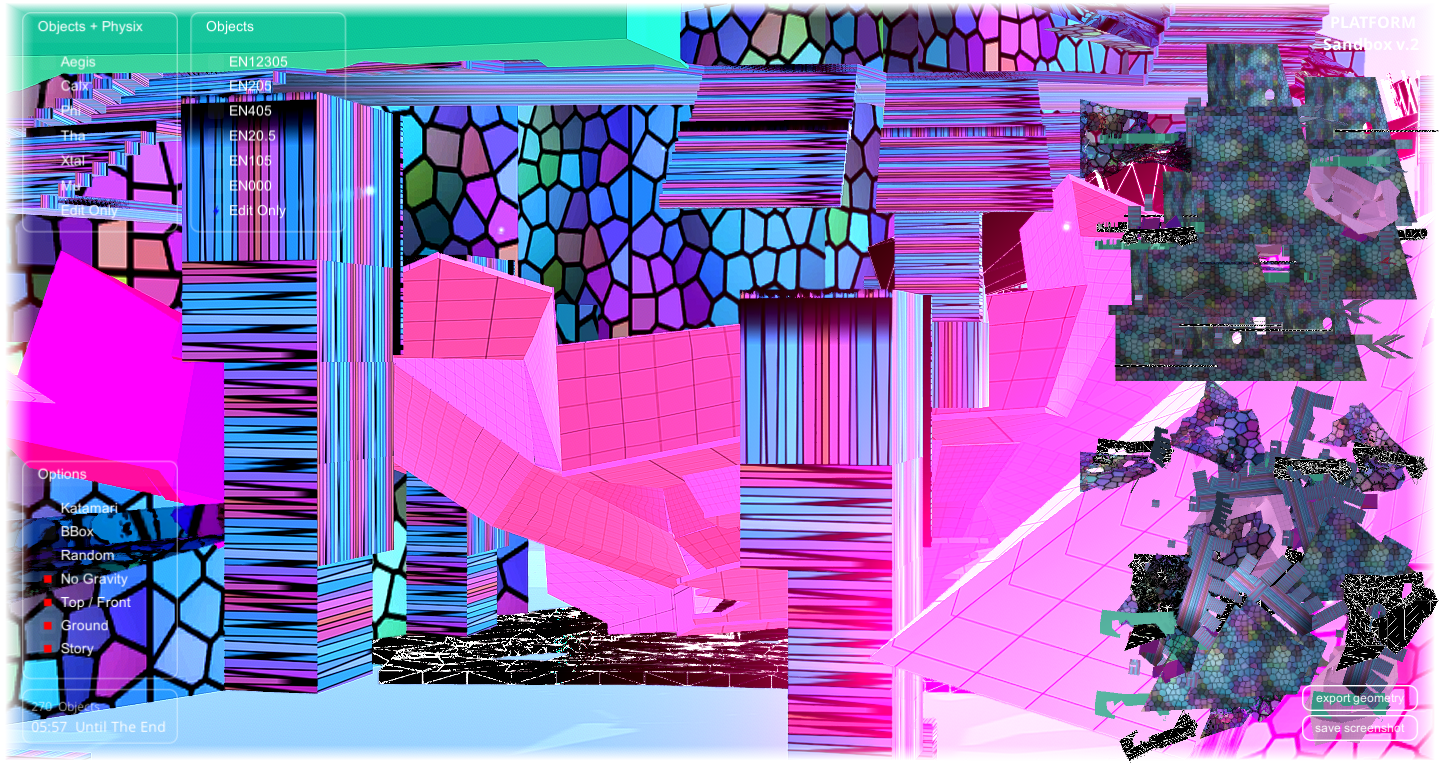
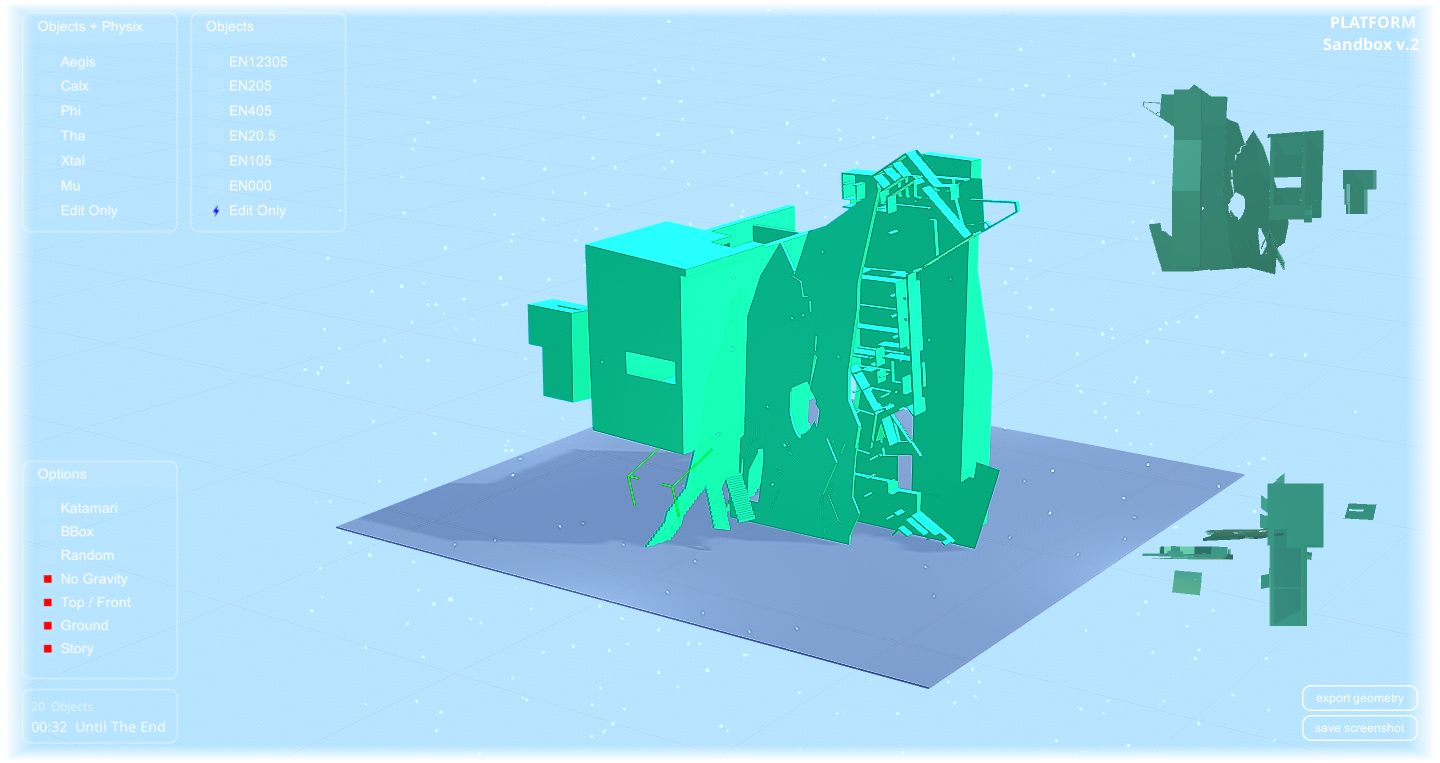


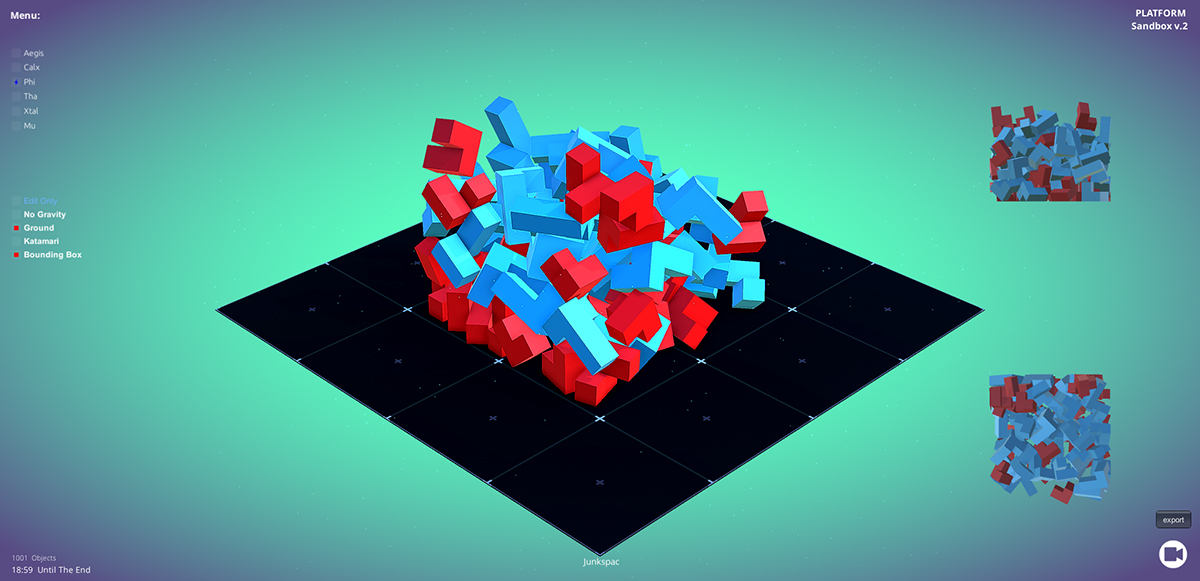
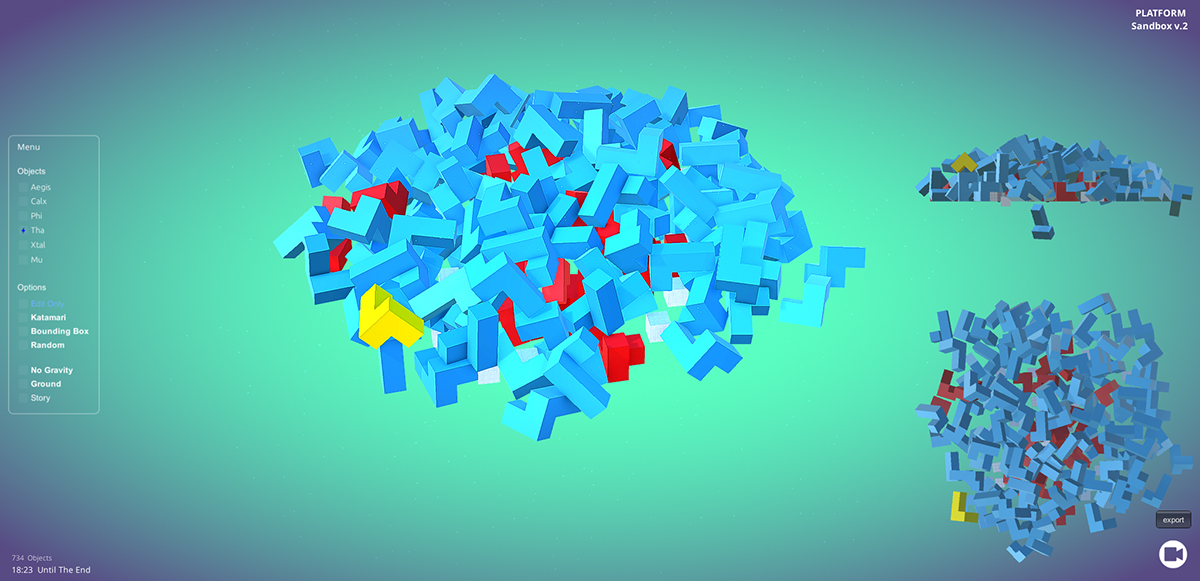
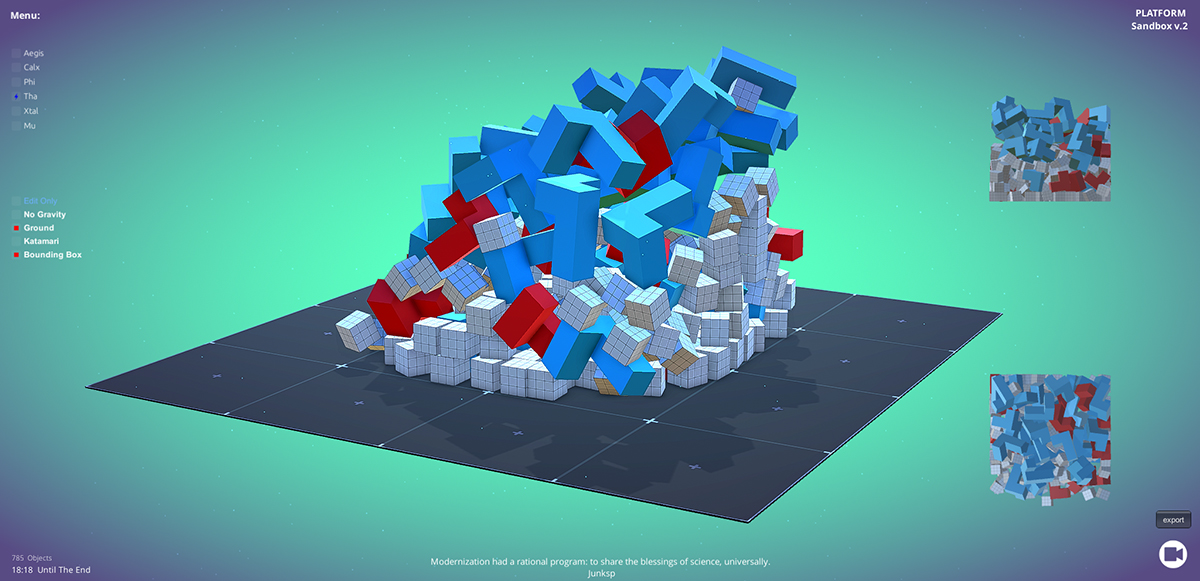
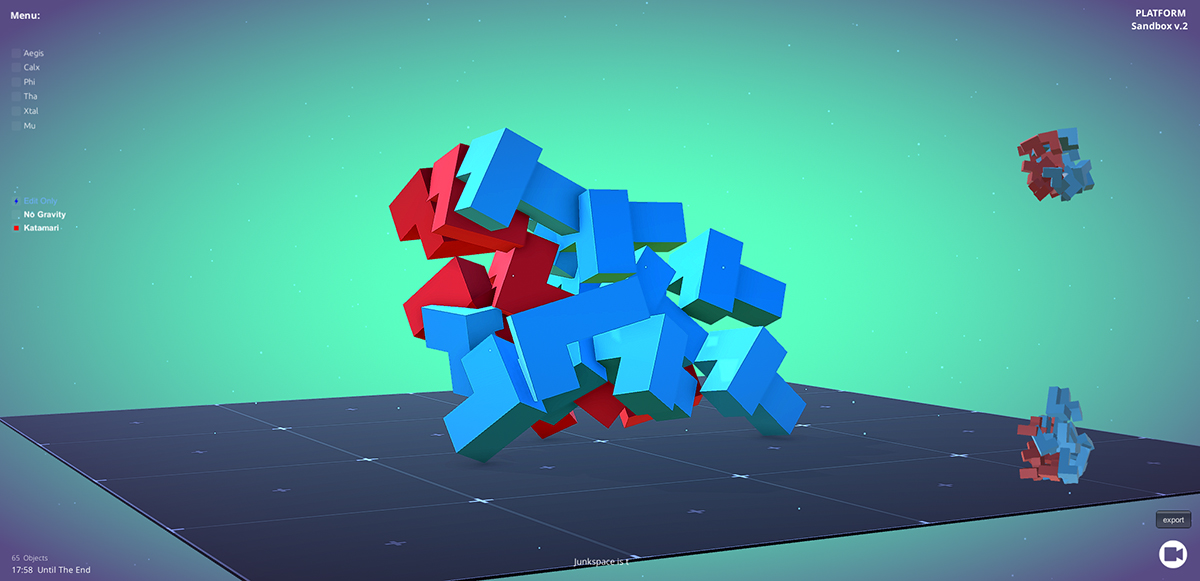
As a direct descendant of traditional design mediums, design software prescribes a very specific role to the user: that of a disinterested, disembodied subject that has a full access to any projection space, that operates on a spectrum of full visibility and full zoom-in. This approach continues and vastly expands a specific subjectivity of an architect operating in the “god-mode” of the traditional discipline. Unlike other software, computer games tend to problematize the notion of subjective agency through either exposing and putting into question the ability of a player, or by disturbing the notion of a goal. Because of their full spectrum deployment of interactivity, games could be thought of as the most ‘medium-specific’ type of software. The notions of agency and authorship are thus perceived in a different manner, which enables loosening up the idea of control. It is precisely the notion of loose control that can be postulated as a possible new authorial model, pitted against the totalizing normativity of current computational methods of design.
Based on these ideas, The Platform Sandbox software is used as a pedagogical tool for design in a first year studio in the Stadelschule Architecture Class in Frankfurt am Main, Germany. It is envisioned as a disciplinary-aware design software, with the purpose to expose the established conventions and defaults of software by making the student aware of the underlying implications of design tools. It was designed to resemble a standard, default way in which design software operates and especially, how it looks, but it works more like a game. The software is a part of the larger pedagogical project in development by the author, that investigates agglomerations and loose wholes as architectural images arising out of the contemporary culture.
The methodology starts by asking a student to choose a building precedent, model it fully in 3d in a ‘traditional’ software and then choose 5-7 ‘characteristic’ parts (linear, surface-like and volumetric) from the precedent. These parts are imported into Platform Sandbox to serve as ‘primitives’ with which a student works. A primitive can have a physics component attached to it, which means that it will respond to gravity.
The software produces six principle spatial diagrams: piles, stacks, constrained aggregates, intersections, polar aggregates (‘Katamari’) and stack intersections. The formation depends on the initial setup of the design space world and the time-based interactions of the user. These diagrams produce further types of composition, based on the spatial principles and rules employed. The rules of the game set up the infinite remixability of the parts in relation to their original meaning and position in the precedent, where the staircase becomes a facade ornament, for example. To reinforce the importance of the volumetric diagram as primary means of operation, interaction is only possible in the main perspective view, thus preventing any design being done in either plan or section.
Each design session is constrained to 20 minutes, after which everything is deleted and the software restarts to default. The process of design is thus more imprecise, messy, and significantly faster, as chance interactions between primitives occur. In a defined time range, primitives randomly appear and are incorporated into the design. The ‘goal’ of the game is to create compositions on the platform, in four scales, defined by the number of primitives in the scene.
This configuration enables the creation of a massive amount of models in a relatively short time span, and this speed and quantity enable the emergence of genres of compositions within the studio. The results can be exported as geometry with textures to be further developed.
The agenda of the studio is to understand software as the design medium, and this is why the user interface design, and some parts of operation were customized by each student.